A five-day trip might have been too short to explore the vast Rajasthan, but the pull of the state was stronger. Both its culture and nature are captivating in a way that made me forget the relentless pace of the journey.
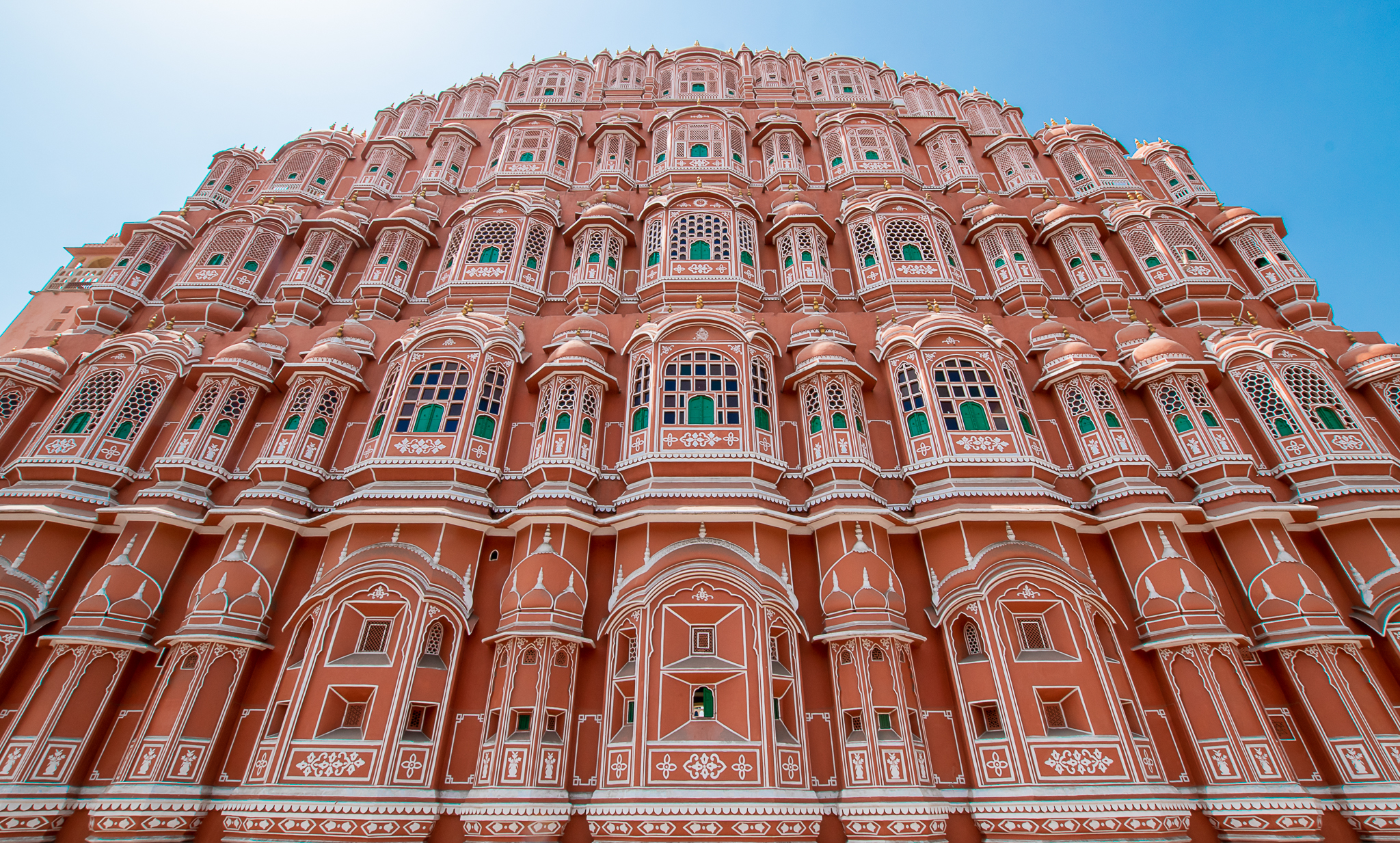
Calling Rajasthan “colorful” is such a cliché, but then, I traveled there right after Holi, the festival of colors, so I will claim some right to use it. Yes, I did miss Holi itself, and, on top of that, I managed to set aside only five days to sweep through this vast state at the far northwestern edge of India. The pull of Rajasthan was stronger, however. Its beauty comes from the seamless melding of culture and nature. It is sprinkled with old and colorful cities, royal palaces, fortresses, temples, mountains, lakes, deserts, and national parks. Rajasthan surely ranks among the top scenic states of India. I could not complain, therefore, when, at three in the morning, I was rolling my heavy luggage toward the Hazrat Nizamuddin station in Delhi. I had to catch the Nanda Devi Express, the sleeper train to my first stop in Rajasthan.
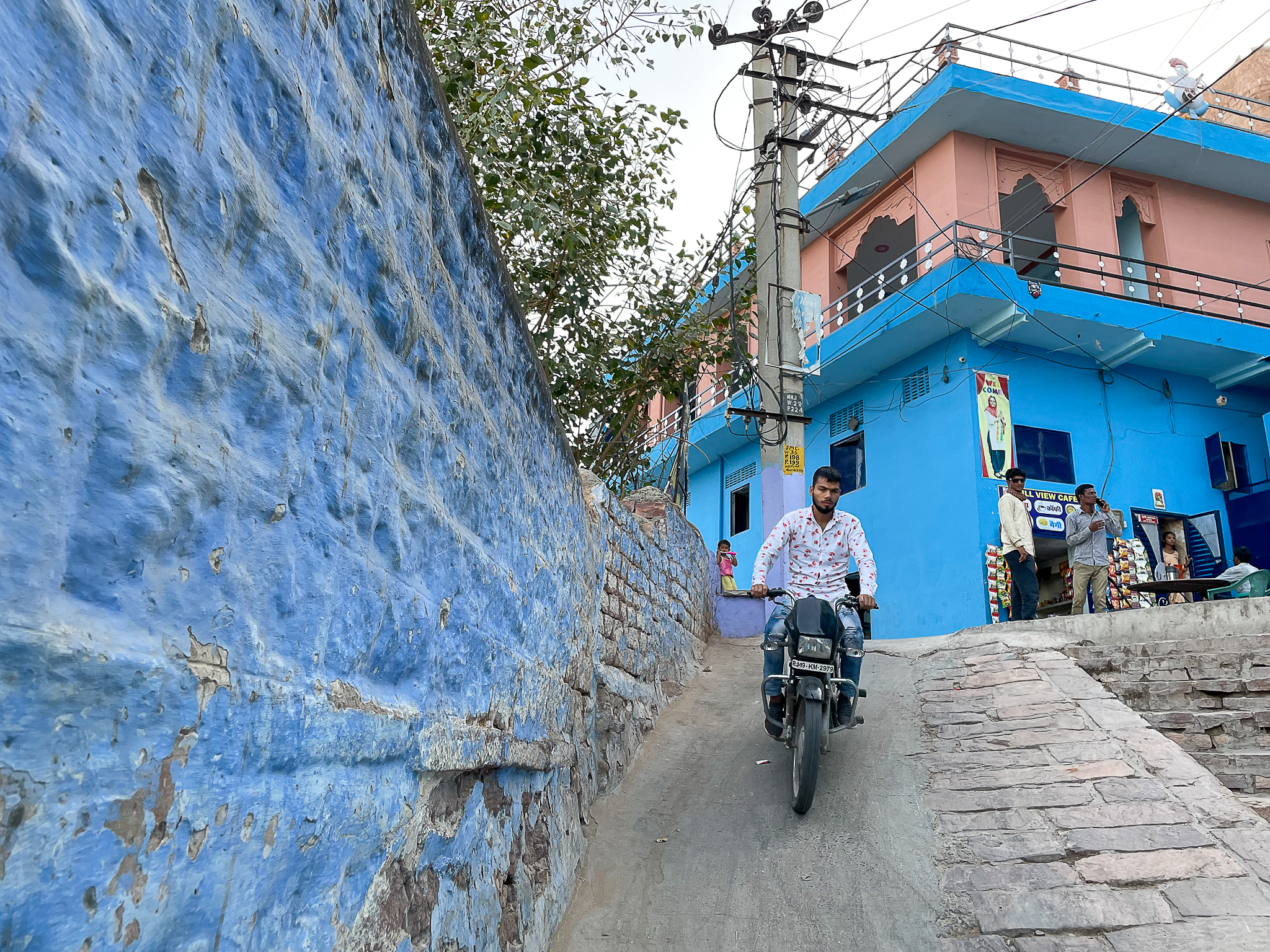
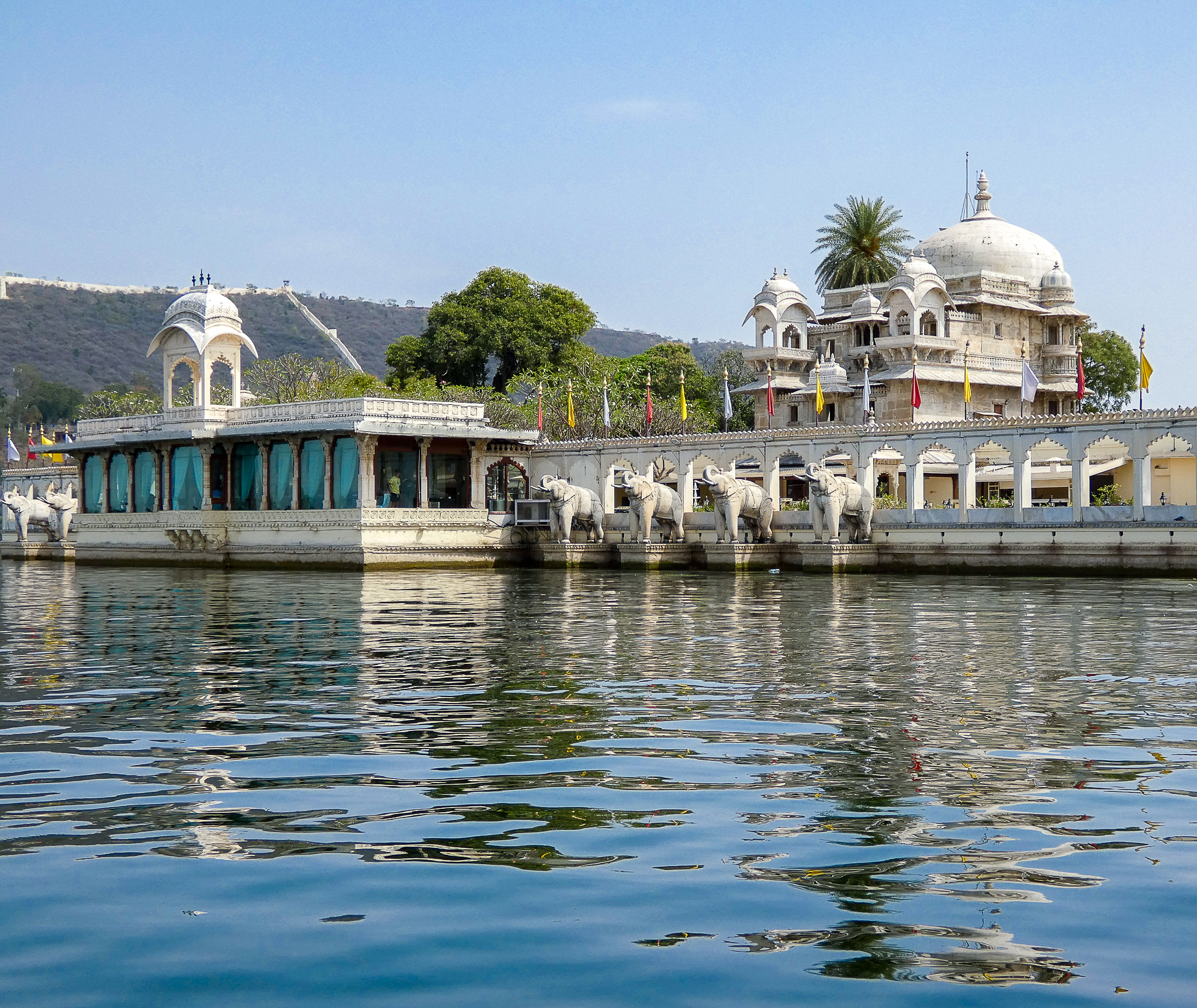
The soothing vibration of the train made me fall asleep on the bunk bed, but in a short while, the sunrise woke me up. I looked out the window and saw how the landscape had changed. The lush plain of the Yamuna River, where Delhi lies, was behind us, and we were roaming through highlands covered with yellow grasses and big boulders. The only crops and trees outside were the ones that could withstand the dryness of Rajasthan.
The train was headed for Kota, but I hopped off in Sawai Madhopur, the town before that. In a nearby lodge, my first question was whether a seat might be available on a jeep for a tour into the park that afternoon.
Royals in the forest
Sawai Madhopur is the base to explore Ranthambore National Park, a natural wilderness that is home to Royal Bengali tigers. I was sitting in an open jeep next to a gentleman of my age, who cordially introduced himself as Sudeep and said that he was on a weekend trip to Rajasthan with his parents from Delhi, who had settled in the row behind us. “How many safaris are you doing?” Sudeep asked me. “Just this one”, I said, unsure what the correct answer was. “Well, this is our third one and we have not seen a tiger yet.”
As we entered Ranthambore, the jeep began racing on a gravel road through the forest. Higher up, the forest opens up into dry meadows. But, importantly, the park has many sharp valleys, which retain water. Here, the forest becomes dense, and animals congregate. As it happened, we spotted not one but two tigers in one such valley after only a few moments inside the park. The regal creatures were resting, yawning, walking among the trees, a few hundred yards from us. A sight we did not want to leave for some time.
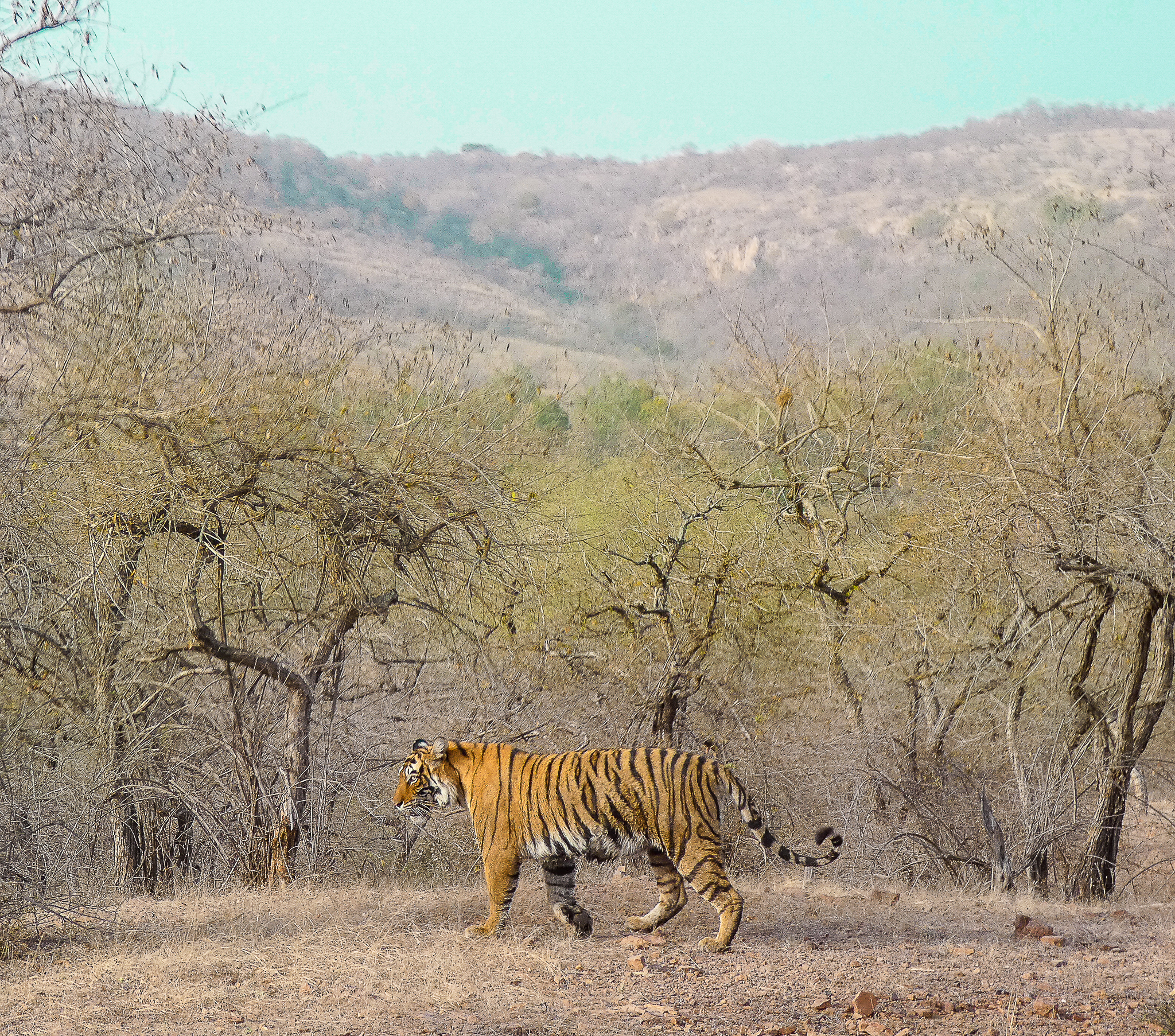
“You don’t know how lucky you are,” I heard when we resumed. The guide explained to us how he recognizes the hundred tigers in the park by their stripes, especially on their faces. In the meantime, Sudeep told me he had just moved back to Delhi from a decade in San Francisco. We observed a flock of peacocks, a monkey, and then a jackal, while we spoke about the tech industries’ ups and downs in California. We paused the conversation only when the guide pointed to the famous Banyan “walking” tree and to a white-throated kingfisher. I asked if the bird is related to the eponymous Indian beer. “No, the Kingfisher bottles have a common kingfisher on them, which looks very different from this white-throated one. ”
I basked in my status as a lucky talisman of the group when we spotted yet another tiger. This one was emerging from a long bath in a pond and, oblivious to us, it left and marched across a meadow. Not far from there, we passed by a family of pedestrians. “They are not afraid of the tigers??” The guide responded that those were local villagers, walking to a temple: “They learn from an early age how to avoid tigers.”
The trip was going too well, so I was not surprised when we ended up having a flat tire. We were still in the park, and the forest was getting dark. The guide refused the offer from us, the men in the car, to jump out and help him. Instead, he walked, with a stick in his hand and a sweat drop on his forehead, looking for a stone to hold up the car, so that he could change the tire. As a pro, he fixed the car swiftly. When we made it to the gate, and it was already locked up for the night, no emotions appeared in his voice either. We just waited for the ranger to come and liberate us.
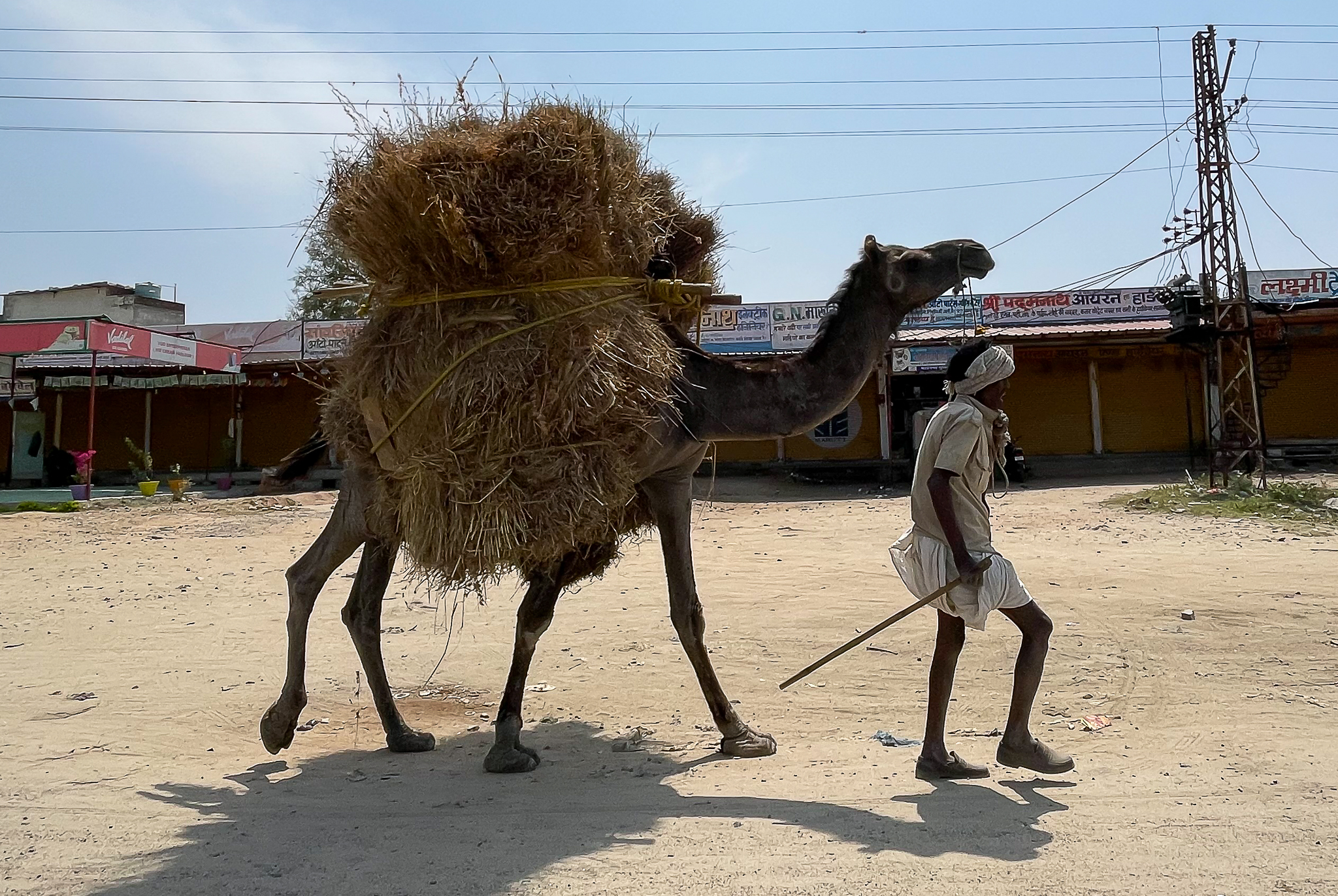
Pink city
Next morning happened to be early as well, since I had a three-hour drive arranged to Jaipur, the capital city of Rajasthan. I tried to stay awake in the passenger seat to watch the landscape. Our route passed through fields and villages, dominated by stony, tapering towers of Hindu temples. The roadside was busy with camels and carts carrying goods. Schoolchildren in uniform walked their daily route. We overtook buses with passengers sitting on the roof, and trucks with colorful tassels hanging from the sides, for good luck.
Soon, we drove by gigantic columns of concrete, order in rows and surrounded by a construction site with no end in sight. That was a poster child of India’s modernization drive — the new eight-lane superhighway that will cut through Rajasthan, on its way from Delhi to Mumbai.
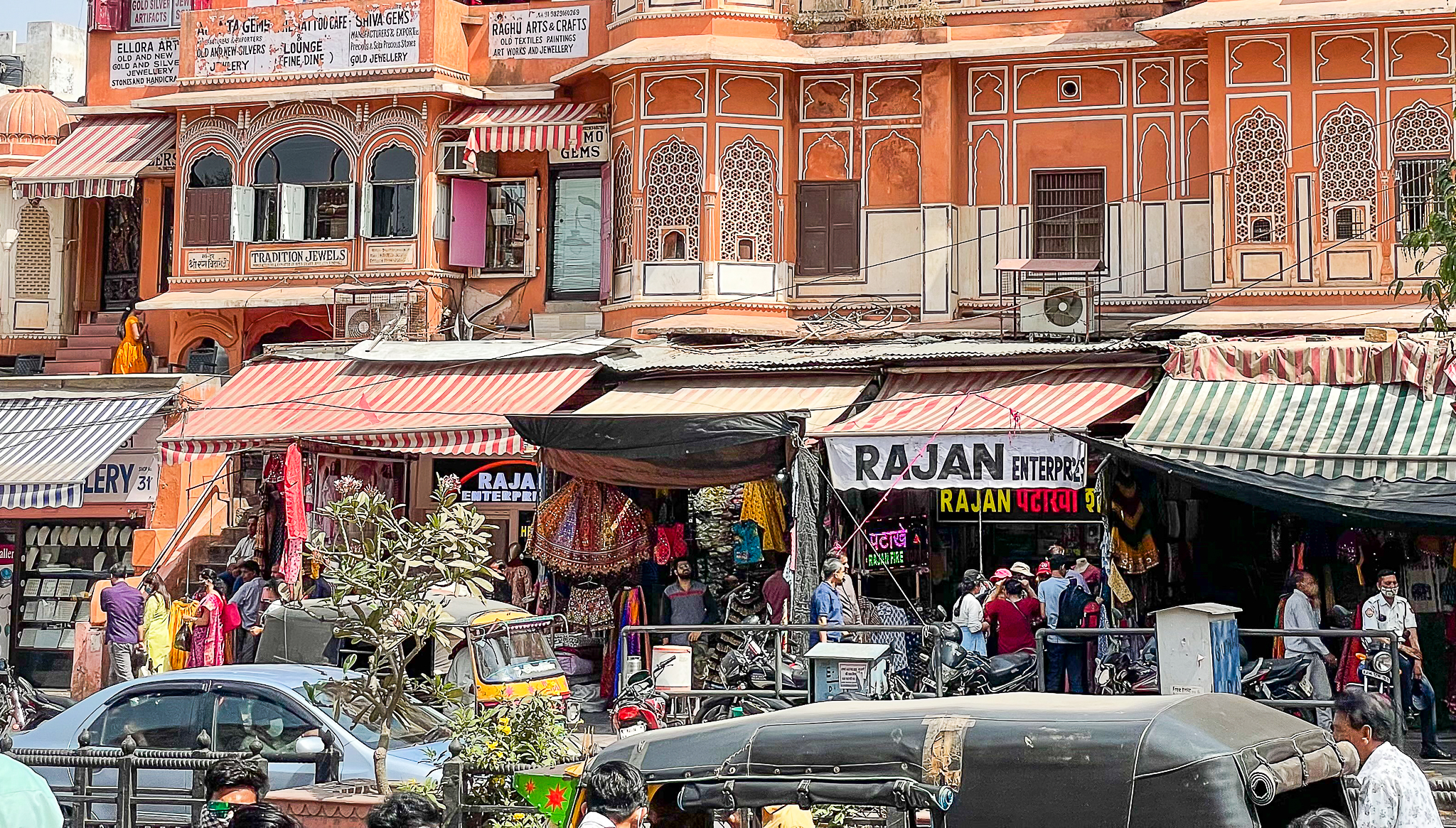
Jaipur is a busy metropolis founded only in the 18th century. Its life revolves around straight, wide avenues lined with pink buildings of a consistently ornamental style, which gives the city a pleasing, immediately recognizable look. That style is best represented in the palatial annex called Hawa Mahal. Its beautiful, symmetric façade is made of bays, apses, and turrets, with lattice windows on all sides. The elaborate design had a less-than-subtle purpose. Hawa Mahal was built for the royal wives, who could watch ceremonial processions on the street below while remaining discretely unseen. In the absence of larger windows and balconies, the geometry of the façade then ensured a better ventilation in the interior of the building. This method of ventilation also explains the name of Hawa Mahal, which translates as the Palace of the Winds.
The boulevards of Jaipur overflowed with noisy traffic. The sidewalks were crowded with people, some of whose arms and faces still borne the colorful marks of the intense Holi celebrations, which sometimes include hard-to-wash powder.
People came out in Jaipur to engage in one of the city’s most famous activities — shopping. Locals and visitors alike kept browsing the never-ending rows of stores and stalls, where all kinds of goods were on offer, including traditional Rajasthani saris and jewels. Despite relentless encouragement from the vendors, I resisted the dazzling temptations because my luggage was full enough.
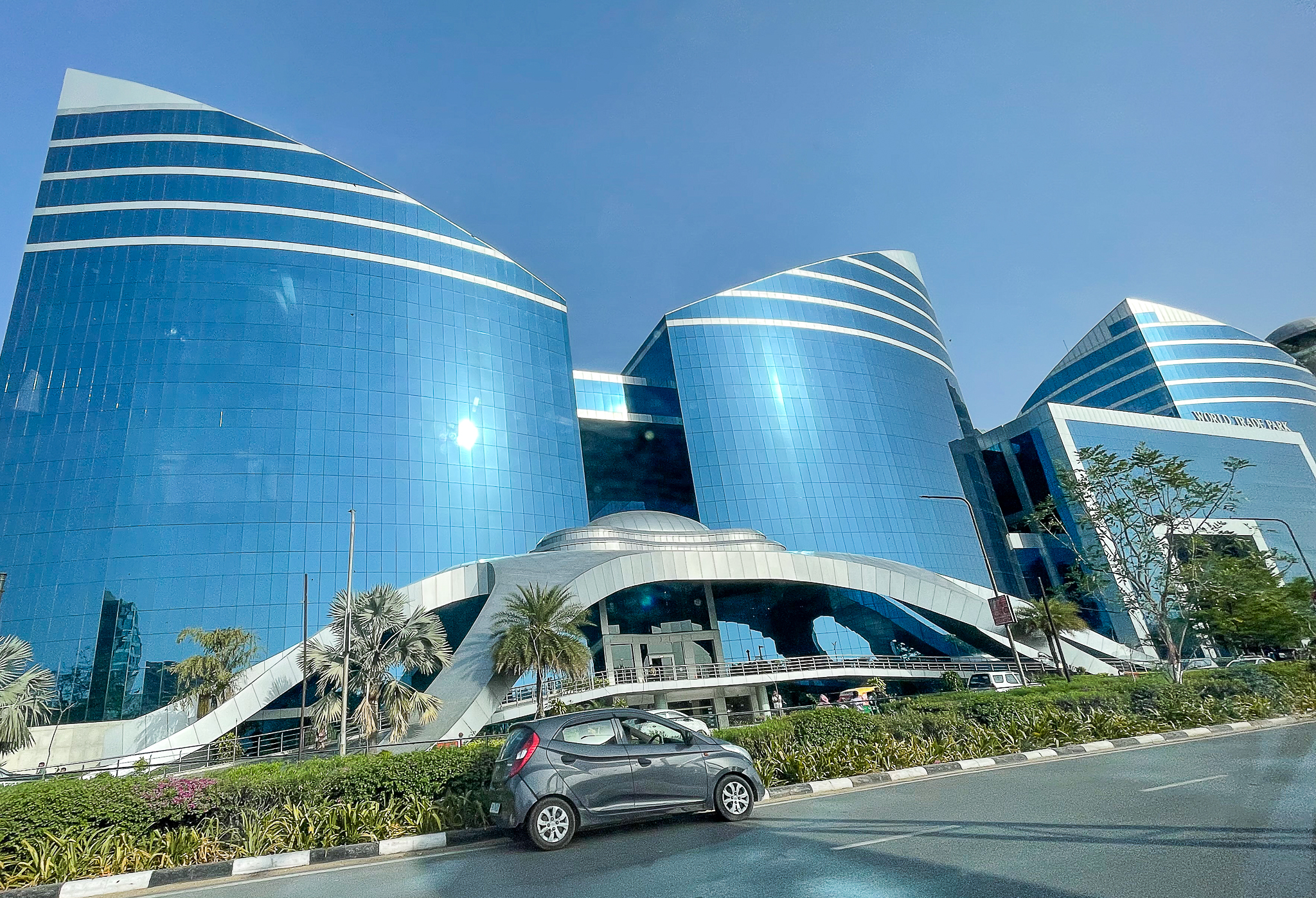
Shopping is not only a matter of the old Jaipur. The newest incarnation of the city’s spirit is the sprawling World Trade Park, conveniently located on the way to the airport. Since its construction in 2012, it has become one of the most popular shopping malls in India. Even without stepping inside, one can admire the blue-glass architecture of its modern building, which preserves Jaipur’s reputation for elegant design.
I, nonetheless, felt ready to depart for a calmer destination. My next stop would be Udaipur, which promised Rajasthani culture in a lush mountain setting, on the shore of a lake.
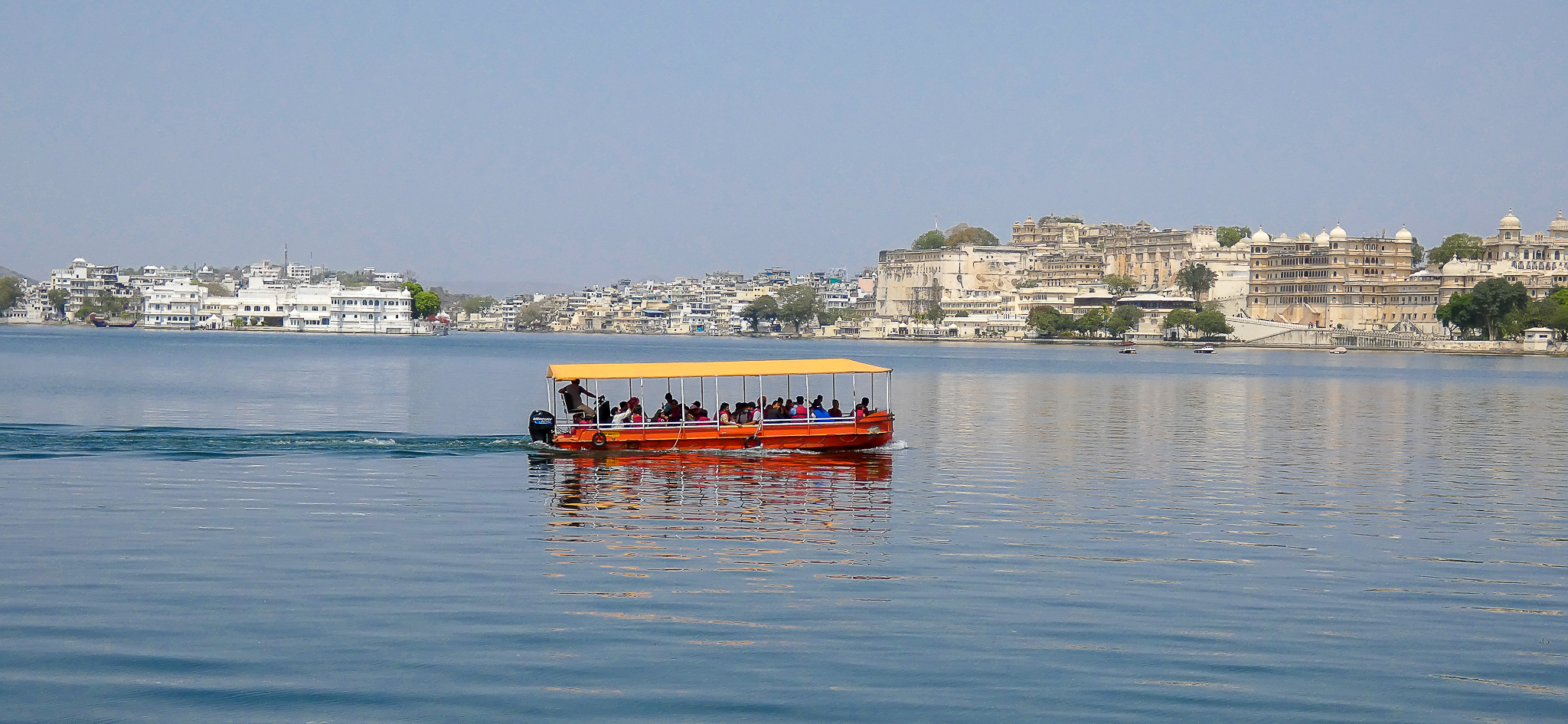
Make sure to continue with Part II of the story, about Udaipur, the white city, and Jodhpur, the blue city: https://travelsbooksessays.com/colorful-rajasthan-indias-scenic-state-in-five-days-part-ii/
If you go
- A website with easy booking of Indian train tickets for foreigners: https://12go.asia/en/operator/indian-railways
- In Sawai Madhopur, I stayed in Ranthambore Regency lodge, https://ranthamboreregency.com/, which offers tiger-watching safari rides.
This article was previously published on TravelExaminer.net, where you can view dozens of award-winning national and international travel destination articles.
